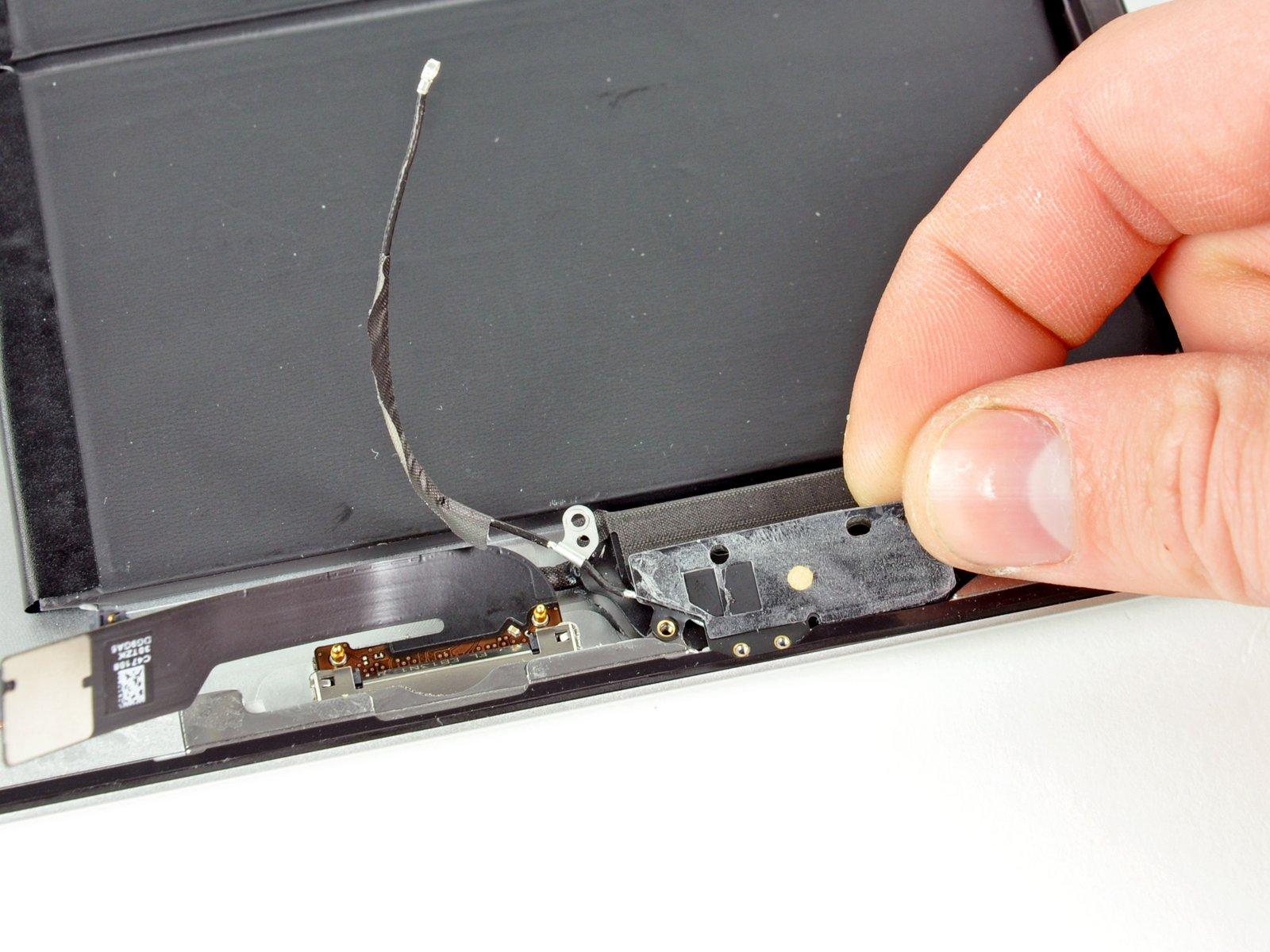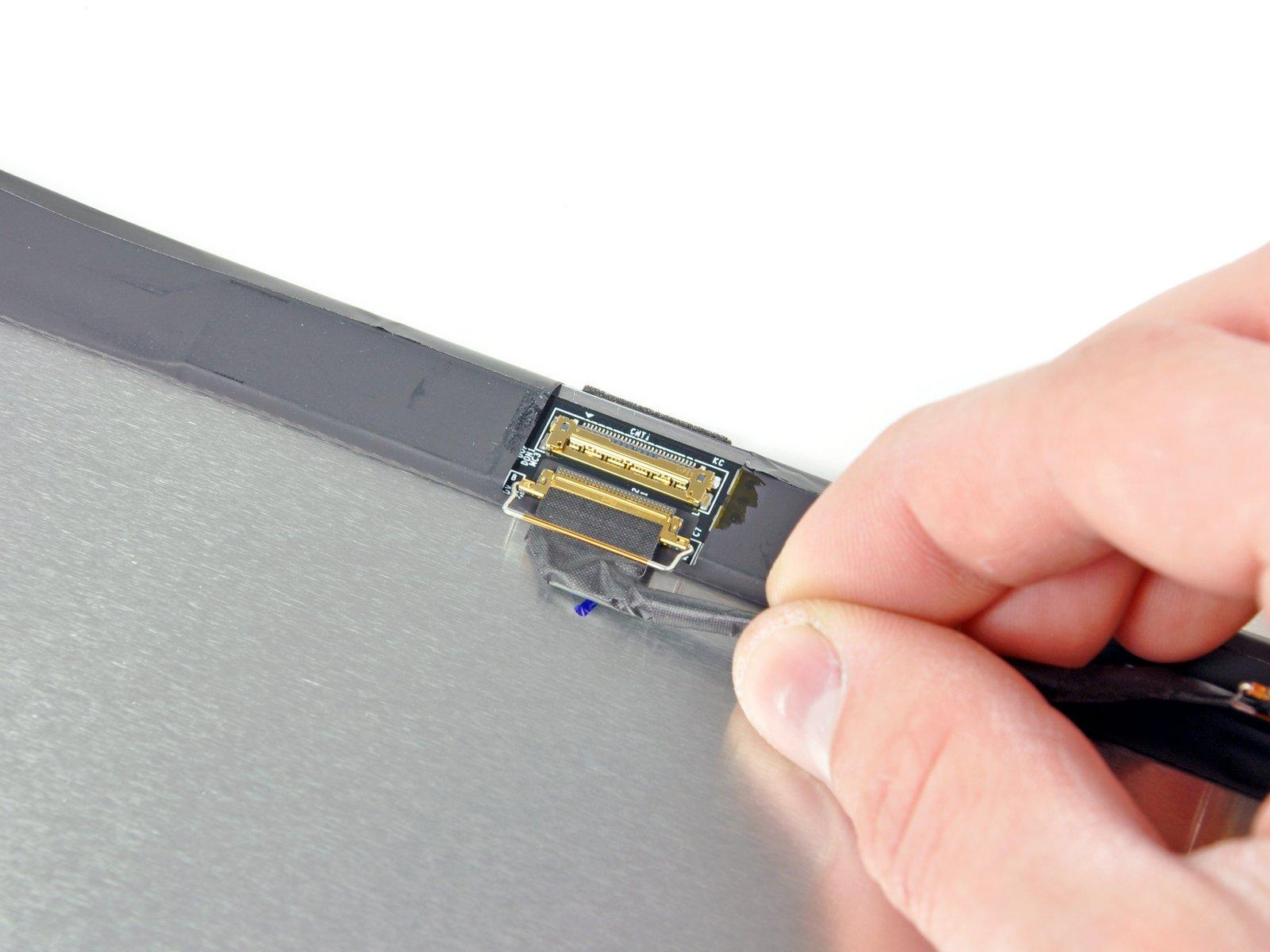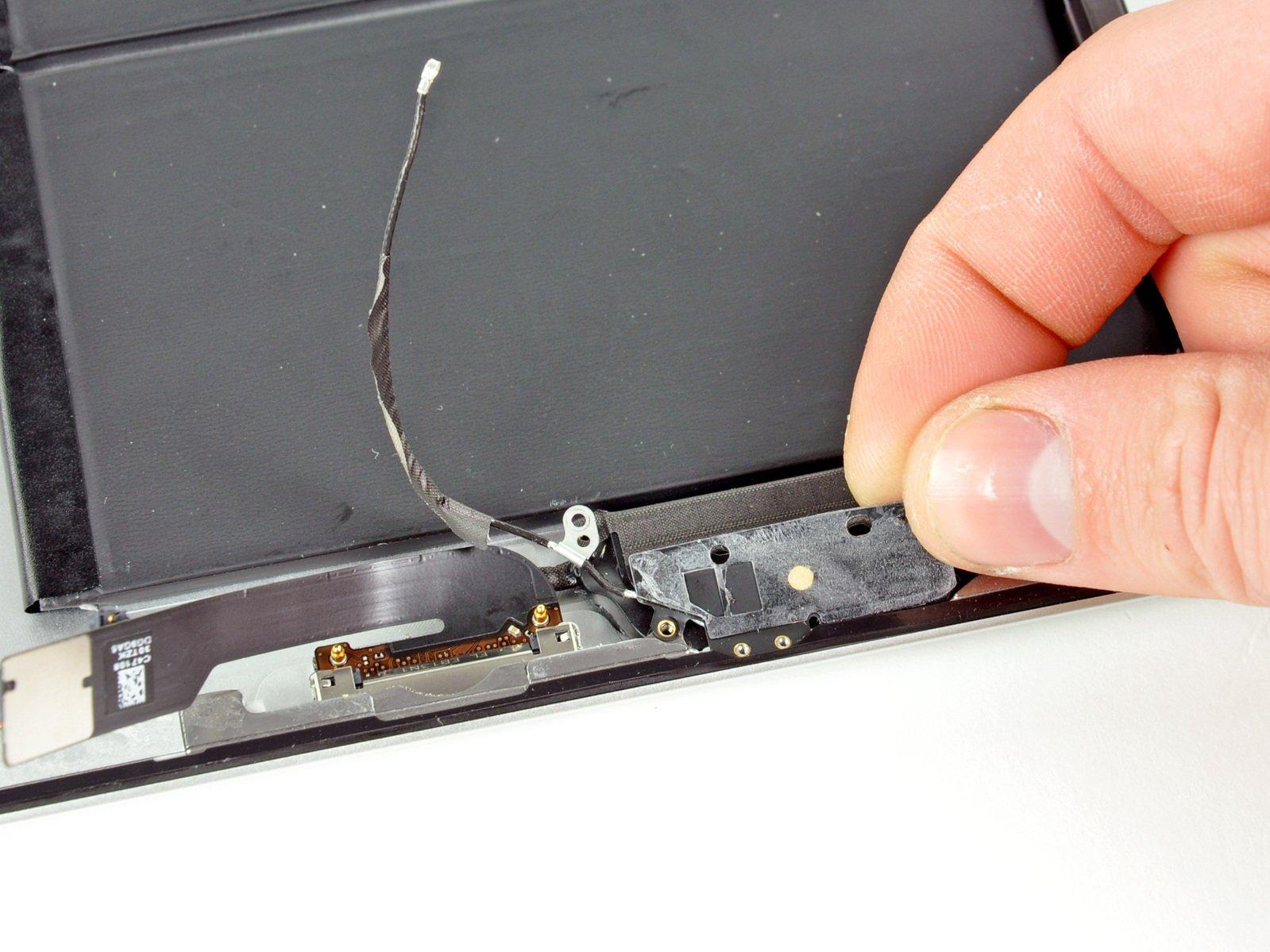DIY iPad Front Panel Replacement Guide for Wi-Fi EMC 2560
Duration: 45 minutes
Steps: 41 Steps
Hey there! Just a friendly reminder: if you run into any hiccups along the way, don’t sweat it! You can always schedule a repair and we’ll be here to help you out. Let’s get that device back in action!
Hey there! You’ve got a complete guide right here for swapping out that plain front panel. If you’re lucky enough to have a Front Panel Assembly replacement part, just hold up before you go yanking the home button off your old panel. Instead, take a step back and follow the steps in reverse to get that shiny new front panel assembly installed. Happy repairing!
Step 1
Before you dive in, give your microwave a quick clean-up! Any stubborn mess on the bottom could stick to the iOpener, and nobody wants that. A little tidying goes a long way!
– Set the iOpener right in the middle of the microwave.
Tools Used
Step 2
Keep an eye on that iOpener during your repair adventure! Overheating can lead to a dramatic burst, and we definitely don’t want that. Aim to keep the heat below 100˚C (212˚F) for a safe and smooth experience.
If your iOpener looks like it’s been hitting the gym and is a bit swollen, just give it a break and don’t touch it.
If the middle of your iOpener is still too toasty to handle, hang tight and let it cool down a bit before giving it another go. A well-heated iOpener should stay warm and ready for action for up to 10 minutes.
– Give that iOpener a warm-up in the microwave for thirty seconds. It’s like a spa day for your repair tool!
– As you work through your repair, remember to pop the iOpener back in the microwave for another thirty seconds whenever it starts to cool down. Keep it cozy!
Tools Used
Step 3
Watch out! The iOpener is going to be super hot, so handle it with care. An oven mitt might just be your best friend right now!
– Carefully take the iOpener out of the microwave, gripping one of the flat ends to steer clear of that hot center. Stay safe and keep it cool!
Tools Used
Step 4
No microwave? No problem! Just pop your iOpener in some boiling water to get it warmed up.
– Grab a pot or pan and fill it with enough water to give your iOpener a nice, warm bath.
– Heat that water up until it’s boiling, then go ahead and turn off the heat.
– Carefully drop the iOpener into the hot water for a cozy soak of 2-3 minutes. Just make sure it’s completely submerged!
– Use some tongs to fish out the heated iOpener from its steamy spa.
– Give the iOpener a good towel-dry—no one likes a soggy tool!
– And voilà! Your iOpener is all set to help you out. If you need to reheat it, just repeat the process: boil the water, turn off the heat, and let the iOpener enjoy another 2-3 minute dip.
Tools Used
Step 5
Put on those safety glasses to keep your peepers safe, and watch out for that LCD screen – we want it to stay in one piece!
– If your display glass is sporting some cracks, let’s keep those shards in check and avoid any ouchies while you work. Grab some tape and cover up that glass!
– Lay down some overlapping strips of clear packing tape over your iPad’s display until the entire front is nicely covered.
– Try your best to stick to the rest of the guide as it flows. Just a heads-up, once the glass is cracked, it might decide to keep breaking while you’re at it, and you might need a metal prying tool to gently lift the glass out.
Step 6
Just a friendly reminder: while you’re getting hands-on with that broken glass, it’s a smart move to rock some safety glasses. They’ll keep you safe from any sneaky shards that might decide to fly your way.
– Place the iOpener flat against the right edge of your iPad, making sure it’s snug and cozy for optimal contact. We want that heat to work its magic!
– Give it a little time to chill—let the bag rest on the iPad for about 90 seconds before diving in to open up the front panel.
Tools Used
Step 7
It might take a little elbow grease to slide that nifty opening tool’s wedged tip between the glass and plastic. Just take your time and be gentle, giving it a little wiggle as needed.
– Check out the little gap in the iPad’s adhesive ring located in the upper right corner, about 2.0 inches (~5 cm) from the top. Looks like we’ve found a sweet spot to get started!
– Now, let’s get our tool aligned with the mute button. Gently insert the tip of a plastic opening tool into that gap between the front glass and the plastic bezel. Just slide in the very tip of the tool, enough to give that crack a little nudge.
Step 9
– With the plastic opening tool securely positioned between the front glass and the plastic bezel, gently slide a plastic opening pick into the space right alongside the tool. You’re doing great!
Step 10
– Take out that trusty plastic opening tool from your iPad and gently slide the opening pick further under the front glass, aiming for about 0.5 inches deep. You’re doing great!
Step 12
This adhesive is no joke! It’s super strong, so you might need to put in a bit of elbow grease. Just take your time and be gentle with it.
If you can spot the tip of the opening pick peeking out from beneath the front glass, gently pull it out just a tad. While plunging the pick in this deep won’t cause any harm, it might leave some sticky adhesive residue on the LCD. Just a heads up!
– As you warm up the bottom edge with the iOpener, start gently peeling away the adhesive from the right side of the iPad.
– Slide the opening pick down the edge of the iPad, freeing up that pesky adhesive as you go along.
Tools Used
Step 13
As you release the adhesive, you might want to slide that heated iOpener back over to the right edge of the iPad. How long it takes for the iPad to cool down while you work will help you decide if this step is necessary.
– If your opening pick decides to play hard to get in the adhesive, just give it a little ‘roll’ along the side of the iPad, and keep on working to free that sticky stuff.
Tools Used
Step 14
– Before you dive in and pull out that first opening pick from the bottom corner of the iPad, slide a second pick under the right edge of the front glass. This little buddy will help keep the adhesive from getting clingy again!
– Give your iOpener a quick reheat, then place it at the top edge of the iPad to keep things nice and warm.
Tools Used
Step 15
The Wi-Fi antenna is snugly secured to the bottom right edge of the iPad’s rear case with screws and a cable. Given the unique placement of the Wi-Fi antenna, it’s super important to handle this part with care, or you might accidentally cause some serious damage. So, let’s take it easy and be gentle!
– Alright, folks! Time to tread lightly in the next few steps.
– You’ll need to carefully detach the adhesive holding the antenna to the front panel, all while keeping the fragile parts that connect the antenna to the bottom of the iPad safe and sound. So, let’s take it slow and steady!
Step 16
Hey there! Just a friendly reminder: don’t slide that pick any further than the bottom right corner. You wouldn’t want to accidentally mess up the Wi-Fi antenna, right? Keep it safe and sound!
– Gently glide the opening pick around the bottom right corner of the iPad to free up that stubborn adhesive. You’ve got this!
Step 17
– Gently glide the opening pick along the bottom edge of the iPad to free up the adhesive holding the Wi-Fi antenna in place. You’re doing great!
Hey there! Make sure to go super slow and steady with this step, as you’ll be super close to that little Wi-Fi antenna buddy. accidents can happen, so if you feel unsure, you can always schedule a repair.
Just a friendly tip: keep that pick snugly under the front glass! Only pull it out a smidge—about 1/8″ (3 mm)—so it stays in place while you work your magic.
Step 18
– Alright, once you’ve navigated past the Wi-Fi antenna—about 3 inches (75 mm) from the right edge, right near the home button—pop that opening pick back in all the way.
– Now, gently slide the pick to the right to break free the adhesive that’s holding the Wi-Fi antenna snugly against the front glass.
Step 19
Remember, don’t heat the iOpener for more than a minute at a time, and give it a little break of at least two minutes before warming it up again. Your device will appreciate the extra care!
If the adhesive has gotten a bit too chilly along the bottom edge, just give the iOpener a little reheating love to warm up that sticky situation where you’re working.
– Keep on peeling back that adhesive along the bottom of your iPad! As you pull the opening pick out, make sure to guide it around the home button. Once you’ve successfully navigated past the home button, reinsert it to a depth of about 1/2 inch (10 mm) and continue the adventure!
Tools Used
Step 20
– Keep on peeling that adhesive all along the bottom edge of your iPad like a pro!
– Once you’ve got it going, slide that opening pick in and leave it snugly under the front glass near the home button.
Step 22
If your adhesive has taken a little too long to warm up, just swap out the iOpener at the top edge and keep going strong! If the iOpener isn’t as toasty as you’d like, give it another heat-up session.
– Gently glide the opening pick along the top edge of your iPad, giving it a little tug to navigate around the front-facing camera bracket.
– The adhesive here is pretty stubborn, so you might need to apply some muscle. Take your time, and watch your fingers to avoid any mishaps with your iPad.
– If your opening pick seems to be stuck in the sticky stuff, try giving it a little roll as shown in step 9.
Tools Used
Step 23
If your adhesive is feeling nice and warm, go ahead and take the iOpener off the iPad for a bit of ease. But if it’s still holding on tight, give that iOpener another heat-up and rest it on the left edge while you get to work.
– Keep peeling away the adhesive along the top edge of the iPad, and gently maneuver the opening pick around the top left corner like a pro.
Tools Used
Step 24
The digitizer cable is nestled about 2″ (50 mm) up from the bottom of your iPad. When you’re getting close, around 2.25″ (60 mm) from the bottom, it’s time to pause that pick action!
– Gently glide the opening pick along the left side of the iPad, letting the adhesive release as you move along. The adhesive here is quite thin because of the digitizer covering the entire left edge. Just be careful not to go too deep—keep it to a maximum of 1/2 inch (10 mm) to avoid any damage to the digitizer. You’ve got this!
Step 25
Be super careful! The bottom of the digitizer cable is just about 1 inch (25 mm) from the base of the iPad. Take your time and work slowly to avoid accidentally cutting this cable.
– With that trusty opening pick still nestled under the bottom edge of your iPad, let’s get to work! Gently coax the adhesive loose at the bottom left corner and set yourself up for success.
Step 26
Sometimes, the adhesive around the edge of your iPad might decide to play it cool and stick back down. If that’s happening, just grab a pick and gently slide it under the edge where the front glass is still holding on tight. Give that adhesive a little ‘cut’ and you’ll be on your way! If you need help, you can always schedule a repair.
– Grab one of those nifty opening picks and gently lift the bottom right corner of your iPad. Once it’s up, give it a little hug with your fingers to keep it in place.
Step 27
Watch out for any leftover sticky stuff that might be clinging on, and grab an opening pick to slice through any adhesive still keeping the front panel snug.
– Grab your iPad by the top and bottom right corners and gently twist the front glass away from the device. It’s like giving your iPad a little stretch!
– When you’re putting everything back together, take a moment to use a microfiber cloth and some compressed air to banish any dust bunnies or fingerprints from the LCD before you seal it up with the glass. A clean screen is a happy screen!
Step 28
– Take a moment to unscrew those four 2.0 mm Phillips screws that are keeping the LCD snug against the rear case. You’ve got this!
Step 29
The front panel ribbon cables are tucked away beneath the LCD. To get to them, just flip the LCD over for a moment and set it aside. Easy peasy!
– Gently lift the LCD from the edge nearest to the volume buttons and smoothly flip it out of the rear case—just like flipping a page in your favorite book.
– Carefully place the LCD face down on the front panel, making sure it’s comfy.
Step 30
Just a friendly reminder: make sure you’re lifting those hinged retaining flaps, not the sockets themselves. You’ve got this!
The retaining flaps are marked in red in the second picture, so keep your eyes peeled!
– Gently slide the edge of a plastic opening tool under the retaining flaps of the two digitizer ribbon cable ZIF sockets and lift them up with care.
Step 31
– Grab a plastic opening tool and gently use its edge to coax that digitizer cable off the shields on the logic board. It’s like a little dance – just be smooth!
– Now, with a careful touch, peel the digitizer cable away from the adhesive that’s keeping it snug against the rear case. You’re almost there!
Step 32
– Gently tug the digitizer ribbon cable straight out from its two snug sockets on the logic board.
Step 33
To get that front panel assembly off, you’ll want to gently slide the ribbon cable out from between the case and the LCD. A little wiggle of the LCD will help create some space for you.
– Gently lift the LCD from the long edge that’s farthest from the digitizer cable and carefully fold it back toward the rear case—think of it like closing a book with a little flair!
– While keeping the LCD elevated, smoothly slide the front panel away from your iPad. Just watch out for the digitizer cable—it’s easy to snag it on the rear case or the LCD!
Step 34
The home button assembly sticks to the front panel with some adhesive magic. To make things easier, grab an iOpener to help soften that adhesive and get started on your repair journey!
– Pop that iOpener into the microwave and give it a warm hug for thirty seconds on high power. It’s like a cozy spa day for your gadget!
– Now, gently place the warm iOpener right over the home button on the front edge of the display. It’s time to give it some TLC!
Tools Used
Step 35
– Slide the plastic opening tool beneath the right side of the home button assembly and gently lift it up. This will help you break free the adhesive on that side. If you’re feeling stuck, remember, you can always schedule a repair.
Step 36
– With a little finesse, gently loosen the adhesive on the left side of the home button.
– Carefully lift the home button mount away from the front panel.
Step 37
– Gently slide the edge of your trusty plastic opening tool under the edge of the home button mounting bracket.
– Carefully glide the plastic opening tool along the retaining spring bracket to free up that adhesive.
– Now, with a bit of finesse, remove the home button along with its mounting bracket from the front panel.
Step 38
The camera bracket is glued to the front panel, so it’s a bit of a sticky situation! To make things easier, we suggest using an iOpener to gently warm up and loosen that adhesive. You’ve got this!
Step 39
The camera bracket will shimmy about 2 mm to the right or left, depending on which way you give it a little nudge.
Step 40
– Gently lift the camera bracket away from the front panel and set it aside. You’ve got this!
Step 41
When swapping out your panel for a shiny new one, keep an eye out for any protective film that might be hanging out on the outside or inside of the frame. It’s got to go, so make sure to peel it off!
– The front panel is still in place.


















































































